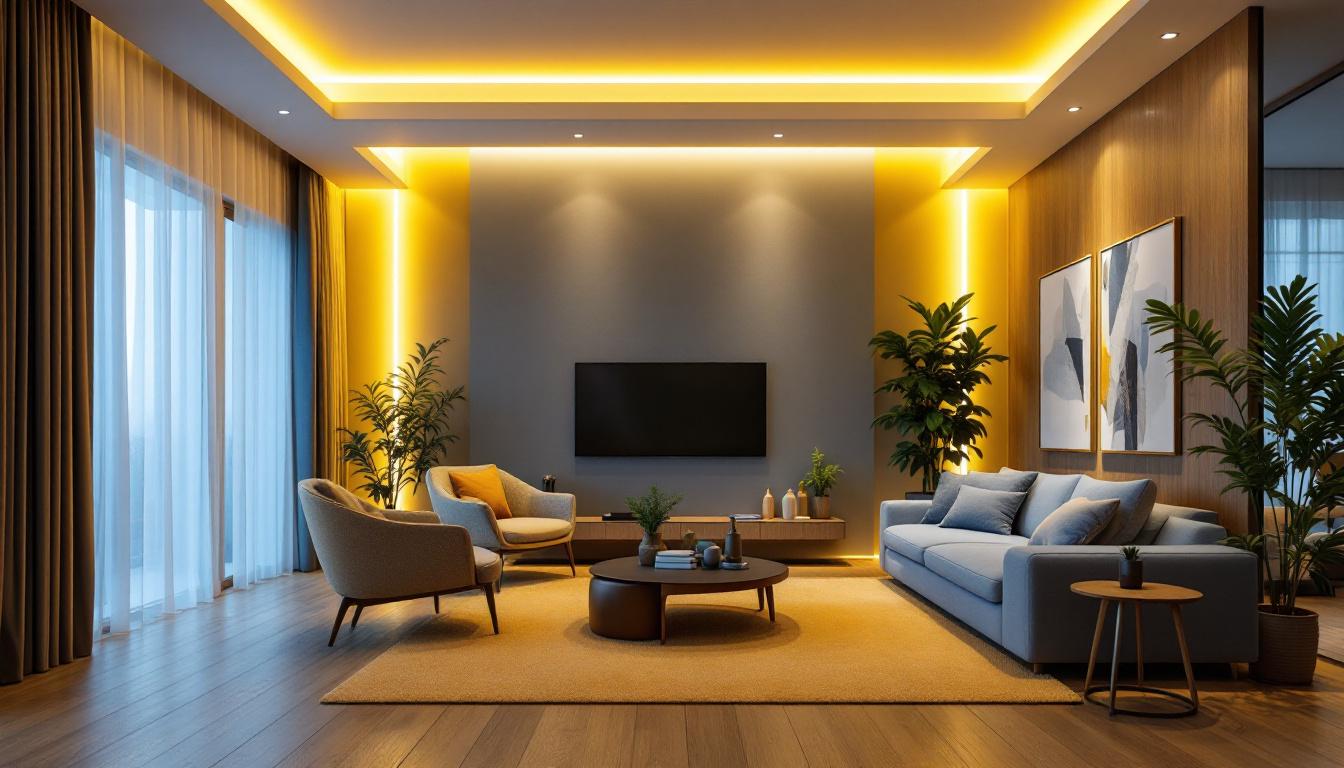
As the demand for energy-efficient and aesthetically pleasing lighting solutions continues to rise, lighting contractors face a unique set of challenges in the commercial sector. Understanding these challenges is crucial for contractors aiming to deliver high-quality installations that meet client expectations while navigating the complexities of the industry. This article explores the top challenges faced by lighting contractors in the realm of commercial lighting fixtures.
One of the foremost challenges for lighting contractors is accurately understanding the specific needs and preferences of their clients. Each commercial space has its own unique requirements based on its function, design, and the ambiance desired by the client.
For instance, a retail store may require bright, inviting lighting to attract customers, while an office space might prioritize energy efficiency and a more subdued atmosphere. Effective communication is essential to ensure that contractors can translate these needs into practical lighting solutions. Engaging in thorough discussions with clients about their vision, budget, and expectations can help contractors tailor their approach, leading to a more satisfying outcome for both parties.
Additionally, understanding the psychology of light can play a significant role in meeting client needs. For example, warm lighting can create a sense of comfort and relaxation, making it ideal for hospitality venues, while cooler tones can enhance focus and productivity in work environments. By considering these psychological effects, contractors can make informed decisions that align with the emotional and functional goals of the space.
Choosing the appropriate fixtures is a critical aspect of meeting client expectations. Contractors must stay updated on the latest lighting technologies, including LED options, smart lighting systems, and energy-efficient designs. This requires not only a solid understanding of the products available but also the ability to make recommendations based on the specific context of each project.
Furthermore, contractors must consider factors such as fixture placement, lumens output, and color temperature to achieve the desired effect. Failure to do so can result in dissatisfaction, leading to costly adjustments and rework. Moreover, the integration of smart technology into lighting design is becoming increasingly popular, allowing clients to control their lighting via smartphone apps or voice commands. This adds an additional layer of complexity, as contractors must be knowledgeable about the compatibility of various systems and how to install them effectively.
In addition to functionality, the aesthetic appeal of fixtures cannot be overlooked. The style of the lighting fixtures should complement the overall design theme of the space, whether it be modern, industrial, or traditional. Contractors often need to curate a selection of fixtures that not only meet technical specifications but also resonate with the client’s personal taste, ensuring a cohesive look throughout the environment.
Another layer of complexity arises when balancing aesthetics with functionality. Clients often have a vision for how their space should look, which may not always align with the practical aspects of lighting. Contractors must navigate these competing priorities skillfully, ensuring that the final installation not only looks good but also performs effectively.
This balancing act requires a deep understanding of design principles, as well as the technical knowledge to implement them. Lighting contractors must be prepared to offer creative solutions that satisfy both visual appeal and operational efficiency. For example, using dimmable fixtures can provide flexibility in adjusting the ambiance for different occasions, from a bright, energetic atmosphere during business hours to a softer, more intimate setting for evening events.
Moreover, sustainability has become a crucial consideration in modern lighting design. Clients are increasingly seeking solutions that minimize environmental impact, which often means opting for energy-efficient fixtures and systems that reduce electricity consumption. Contractors must be adept at recommending products that not only meet aesthetic and functional needs but also align with the growing demand for eco-friendly practices in commercial spaces. This not only enhances the appeal of the project but also positions the contractor as a forward-thinking professional in the industry.
Regulatory compliance is a significant challenge that lighting contractors must address. Various codes and standards govern commercial lighting installations, including energy efficiency regulations, safety codes, and accessibility requirements.
Contractors must be well-versed in local, state, and federal regulations to ensure that their installations meet all necessary criteria. This not only protects their clients but also safeguards their own business from potential legal issues.
Regulations in the lighting industry are continually evolving, making it essential for contractors to stay informed about the latest developments. This can be a daunting task, especially for those who manage multiple projects simultaneously.
To effectively navigate these changes, contractors can benefit from ongoing education and training. Participating in workshops, webinars, and industry conferences can provide valuable insights into new regulations and best practices.
Energy codes are particularly important, as they often dictate the types of fixtures that can be used in commercial installations. Contractors must ensure that their lighting designs comply with these codes, which can vary significantly from one jurisdiction to another.
Failure to adhere to energy codes can result in penalties, project delays, and increased costs. Therefore, contractors should prioritize thorough research and consultation with local authorities to ensure compliance.
Timely project completion is crucial in the competitive landscape of commercial lighting. Delays can lead to increased costs and dissatisfied clients, making effective project management a top priority for lighting contractors.
Contractors must coordinate various aspects of the project, including procurement of materials, scheduling of labor, and installation timelines. Each of these elements can present unique challenges that require careful planning and execution.
One of the most significant factors affecting project timelines is supply chain disruptions. The availability of lighting fixtures and materials can fluctuate due to various reasons, including manufacturing delays, shipping issues, and market demand.
Contractors must develop strategies to mitigate these risks, such as establishing strong relationships with suppliers and maintaining a buffer stock of essential materials. Effective communication with clients regarding potential delays is also vital to manage expectations and maintain trust.
Another critical aspect of project timelines is labor management. Contractors often rely on subcontractors and skilled labor to execute installations, and coordinating these resources can be challenging.
Ensuring that the right personnel are available at the right time is essential to avoid bottlenecks in the project timeline. Contractors should invest in building a reliable network of skilled workers and foster good relationships to facilitate smoother project execution.
The rise of smart technology in commercial lighting presents both opportunities and challenges for contractors. While smart lighting systems offer enhanced control, energy savings, and improved user experiences, integrating these technologies can be complex.
Contractors must have a solid understanding of various smart lighting solutions, including their compatibility with existing systems and the specific needs of the client. This requires ongoing education and training to stay abreast of the latest advancements in smart technology.
Another challenge lies in educating clients about the benefits and functionalities of smart lighting systems. Many clients may be unfamiliar with these technologies and may require guidance to understand how they can enhance their space.
Contractors must be prepared to explain the advantages of smart lighting, such as energy savings, remote control capabilities, and customizable settings. Providing demonstrations and case studies can help clients visualize the potential benefits, making them more likely to invest in these solutions.
Integrating smart lighting systems can also present installation and configuration challenges. Contractors must ensure that all components work seamlessly together, which may involve troubleshooting compatibility issues between different devices and platforms.
Thorough planning and testing are essential to avoid complications during installation. Contractors should allocate sufficient time for configuration and ensure that they have the necessary expertise to handle any technical issues that may arise.
Budget constraints are a common challenge faced by lighting contractors in the commercial sector. Clients often have strict budgets that limit the options available for lighting fixtures and installations.
Contractors must navigate these financial limitations while still delivering high-quality results. This requires creativity and resourcefulness in finding cost-effective solutions that meet client expectations without compromising on quality.
Value engineering is a crucial strategy that contractors can employ to address budget constraints. This process involves analyzing project requirements and identifying opportunities to reduce costs without sacrificing quality or functionality.
By exploring alternative materials, fixtures, and design approaches, contractors can provide clients with options that align with their budget while still achieving the desired outcomes. Effective communication about these alternatives is essential to ensure client buy-in.
Another way to navigate budget constraints is by leveraging available incentives and rebates for energy-efficient lighting solutions. Many utility companies and government programs offer financial incentives to encourage the adoption of energy-saving technologies.
Contractors should stay informed about these programs and educate clients on how they can take advantage of available rebates. This not only helps clients save money but also positions contractors as knowledgeable partners who are invested in their clients’ success.
Quality control is paramount in the commercial lighting industry, as any deficiencies in installation can lead to significant repercussions, including client dissatisfaction and increased costs for rework.
Contractors must implement rigorous quality control measures throughout the installation process to ensure that every aspect meets the required standards. This includes thorough inspections, testing, and adherence to best practices.
Investing in training and certification for staff can significantly enhance quality control efforts. Well-trained personnel are better equipped to identify potential issues and implement solutions effectively.
Contractors should prioritize ongoing education and professional development to ensure that their teams are knowledgeable about the latest industry standards and best practices. This commitment to quality can set a contractor apart in a competitive market.
Gathering client feedback is another essential component of quality control. Contractors should actively seek input from clients after project completion to identify areas for improvement and ensure satisfaction.
By fostering a culture of continuous improvement, contractors can refine their processes and enhance the quality of their installations over time. This not only benefits future projects but also strengthens client relationships and builds a positive reputation in the industry.
Lighting contractors in the commercial sector face a myriad of challenges that require a combination of technical knowledge, project management skills, and effective communication. By understanding and addressing these challenges, contractors can deliver exceptional lighting solutions that meet client needs, comply with regulations, and enhance the overall functionality and aesthetics of commercial spaces.
Staying informed about industry trends, investing in ongoing education, and fostering strong relationships with clients and suppliers are essential strategies for overcoming these challenges. As the commercial lighting landscape continues to evolve, contractors who adapt and innovate will be well-positioned for success.
As you navigate the complexities of commercial lighting installations, partner with a brand that understands your challenges and supports your success. At LumenWholesale, we provide you with spec-grade lighting products that meet the highest industry standards, ensuring each project shines with reliability and excellence. Say goodbye to inflated markups and hello to unbeatable wholesale prices, free shipping, and the convenience you deserve. Elevate your lighting game and give your clients the quality they expect. Explore our selection and secure the best value in wholesale lighting today.

Discover 8 recessed light options for energy-efficient lighting that can reduce your energy bills by up to 75%.

Illuminate your outdoor spaces with ease! Discover expert tips from lighting contractors on choosing and installing dawn to dusk outdoor lights.

Discover the essential components of ceiling fans in this comprehensive guide tailored for lighting contractors.

Discover the answers to lighting contractors’ most common questions about outdoor solar lights for homes.